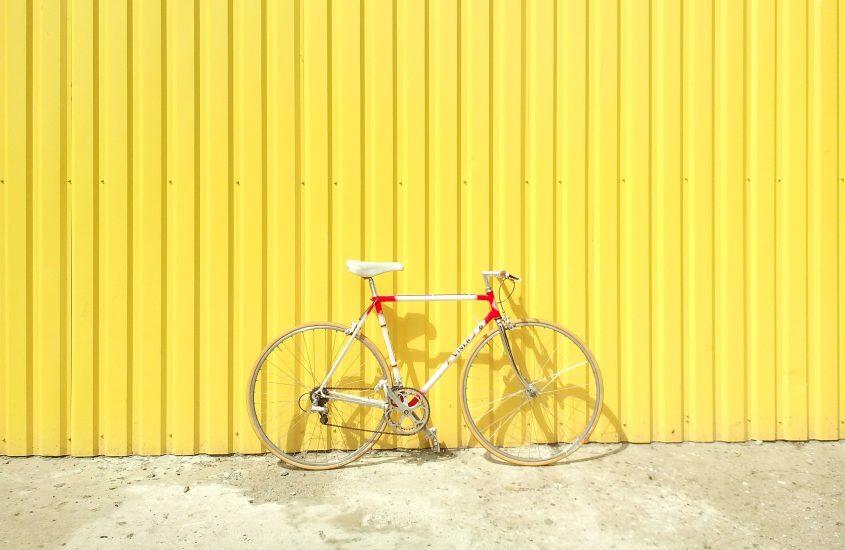Have you ever heard of Jung’s archetypes? Carl Gustav Jung was a Swiss psychologist who believed that people tend to use symbols and images to explain and understand the world and that this influences the human behavior by forming the fundamental features of the personality.
Most of us have a prevailing profile that resembles one of the 12 archetypes defined by him. These archetypes, which are the models or patterns, were organized into three groups: Ego, Soul and Self.
The EGO types are the Innocent, Orphan, Hero and Caregiver.
The SOUL types are the Explorer, Rebel, Lover and Creator
Finally, the SELF types are the Jester, Sage, Magician and Ruler.
“ Archetypes are universal stories, ideas, values, journeys or characteristics that exist across the globe as part of our collective consciousness ”.
Just Creative
For each archetype, Jung described the behavior, dreams, fears, weaknesses, goals and talents. I am not going to describe them all in this article, but if you want to know further, you can search in Google for a definition on reliable websites. You can also take some tests to find out your archetype. I confess that I adore this kind of test of personality and have already taken mine!
FROM PSYCHOLOGY TO BUSINESS
This Jung model has gone beyond psychology and people related to the areas of consumer’s behavior, marketing and business, and now it is being applied to analyze the profiles of consumers and the own brands. It is interesting to see how the brand professionals describe the brands based on Jung’s archetypes. You can see one example in this link .
I myself got to know this concept in the corporate environment when I was introduced to a brand from the description of its archetype.
FROM PSYCHOLOTY TO SUSTAINABILITY
For sustainability, KANTAR consultancy, specialized in insights and data and that dedicates to understand how people think, feel, buy, share and make choices, applied the Jung method to define possible targets of the brands to connect with consumers engaged with environmental causes.
The report “Sustainability – Assuming the Responsibility in 2020” was based on the NeedScope methodology that uses projective techniques related to the Jung archetypes to unveil the emotion behind a brand.
According to such study, human behavior is defined by the emotional need that people have to feel connected with a bigger asset and this happens in three levels.
Image: Consumer Needs: Behavior, Social Needs, Emotional Needs
The first level is behavior: Use recyclable or reusable packages, natural and chemical-free ingredients and energy-efficient. The second are social needs: acquire local, homemade, organic products and the belief that animals should be bred free. The third level are the emotional needs: protect, reconnect, balance, share, support, respect.
Based on such behaviors, six profiles were identified, separated by colors, with features that exemplify each.
The profiles were defined according to the identification of fundamental dynamics that define the reasons why people connect to environmental actions and causes.
IMPACT: an optimistic approach with a short goal.
COLLECTIVE: shared responsibility to make the difference.
INDIVIDUAL: take a position through a decisive action.
MEANING: an approach conceived with a long-term target.
THE ARCHETYPES
I organized the content of the archetypes presented in the study in a more visual way for an easier reading. So, you will find below the 6 profiles identified in the Kantar research.
FEARLESS ACTIVIST

Color: red
The fearless activist has placed her/himself in the front line by demonstrating and giving time for causes. He/she goes against what is conventional and has a minimalist lifestyle. People of this profile are always ahead of others, have new and thrilling ideas, and experience the most recent ecologically-correct products and find out niche brands.
INFLUENT INVESTOR

Color: purple
The influent investor buys organic products, donates money to social reputable organizations. He/she expresses his/her concern with the environment by acquiring premium products, such as powerful electrical cars, free of carbon dioxide, with superior performance and ostentation design. The consumer of such profile has a modern and ecological way of life.
SMART PLANNER

Color: blue
The smart planner uses an approach based on science and researches the available options. He/she is an expert in energy efficiency and interested in smart cars, issues of modern urban life. He/she has a long-term planning approach to improve an effective waste management. The consumer of this profile considers and balances affordable price with environmental impact. His/her purchases are classical and quality – buy once and make a smart purchase.
AFFECTIONATE CAREGIVER

The affectionate caregiver wears sustainable clothes, made with simple materials and gentle methods. He/she is well-considered in his/her dislocations using means like bicycle and stroll. The consumer of this profile goes to fairs and buys local and seasonable products. He/she manages the garbage carefully, nurturing the Earth with compounds and earthworm breeding. He/she uses traditional methods, rustic style, made and nourished at home.
PRACTICAL ASSISTANT

Color: orange
The practical assistant consumes products with sustainable ingredients and fair trade practices. He/she nourishes delicious fruit and vegetables, uses reusable packages. He/she is attentive to practical and uncomplicated packages that are easy to reuse or recycle. The consumer of this profile engages in fund raising actions for the community and friendly cleaning of the neighborhood.
OPTIMISTIC ENTHUSIAST

Color: Yellow
The optimistic enthusiast is a supporter of reusable purchase bags that are beautiful, creative and in bright colors. He/she rides bicycles and electrical toy scooters to move around the city with friends. He/she carries out exciting activities in group and takes part in events for environmental organizations. The consumer of this profile dives into trends, hashtags and funny challenges in video on social media. He/she wears accessories of extrovert and optimistic campaigns, with bright colors and garish t-shirts for supporters.
CONSCIOUSNESS AND CONSISTENCY
As the environmental agenda consolidates itself as a global concern, we see companies, governments and mainly citizens mobilizing to adopt behaviors that cause less impact.
As we saw in the KANTAR research, the professionals linked to marketing, brand and communication understand this trend and have worked so that the brands take a more conscious position and reach more engaged consumers.
But this must be done not only as a commercial or marketing action. The companies need to reflect, in all business aspects, the environmental concern and other sustainability aspects.
I loved the research and hope it can influence business that are taking sustainability seriously.

* English is not my native language. If you find any opportunity of improvement, let me know. I’ll love to learn from experts!
Source: Pesquisa Kantar – Sustentabilidade – Assumindo a responsabilidade em 2020
Highlight Photo: Photo by Alexey Lin on Unsplash
Photo by Fiona Smallwood on Unsplash (Fearless Activist)
Photo by Jack B on Unsplashj (Influent Investor)
Photo by Pierre Châtel-Innocenti on Unsplash (Smart Planner)
Photo by Sarah Pflug from Burst (Affectionate Caregiver)
